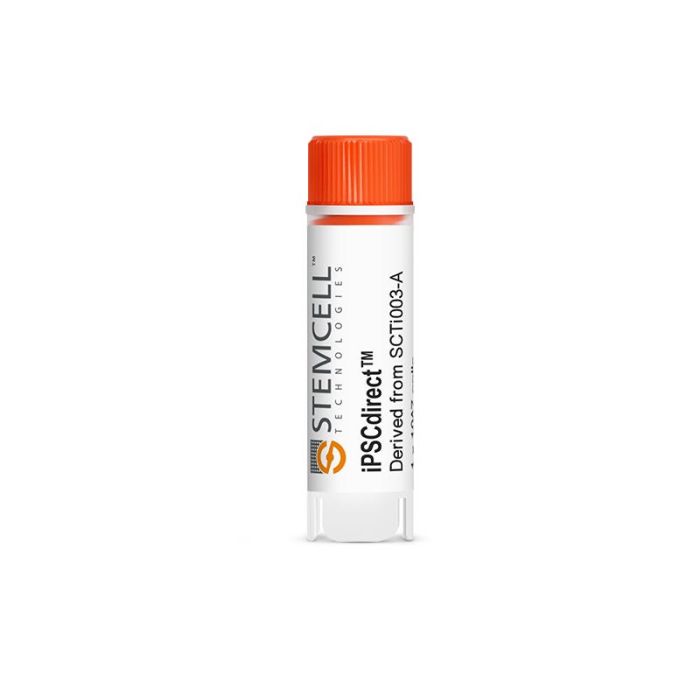产品号 #200-0510_C
一次性使用、免维持的人诱导多能干细胞,冷冻
若您需要咨询产品或有任何技术问题,请通过官方电话 400 885 9050 或邮箱 info.cn@stemcell.com 与我们联系。
人诱导多能干细胞。冷冻,1 × 10^7个细胞/瓶
人诱导多能干细胞。冷冻,1 × 10^7个细胞/瓶
一次性使用、免维持的人诱导多能干细胞,冷冻
使用即用型单细胞 iPSCdirect™ 人诱导多能干细胞 (iPSC) 加速您的研究。iPSCdirect™ 细胞具有高度一致性和稳定性,可让您免去为 iPSC 研究开发和鉴定细胞库的成本和精力,也无需长期培养 iPSC。每次实验均使用相同来源且经过质量控制测试的 iPSC,可节省时间并减少差异性。iPSCdirect™ 可在复苏后直接用于基于 iPSC 的筛选或分化为多种细胞类型。
iPSCdirect™ 来源于健康对照细胞系SCTi003-A,采用专门冻存工艺保存。 为了获得最佳产品性能,iPSCdirect™ 采用我领先的mTeSR™Plus培养基生产,并针对单层分化方案进行了优化。它与多种STEMdiff™培养基产品兼容,包括STEMdiff™心室肌细胞分化试剂盒, STEMdiff™SMADi神经诱导试剂盒,STEMdiff™肝细胞试剂盒.
本产品仅供研究使用(RUO),已获得学术和商业用途许可。有关供体详情和来源细胞库的细胞质量表征,请参阅本页的数据图表。如需更多细节,更多详细信息,请参阅特定批次的分析证书。
包含
FreSR™-S
分类
冻存
细胞类型
多能干细胞
种属
人
细胞和组织来源
多能干细胞
品牌
STEMdiff
研究领域
疾病建模,药物发现和毒理检测,感染性疾病(传染病),神经科学
供体状态
正常
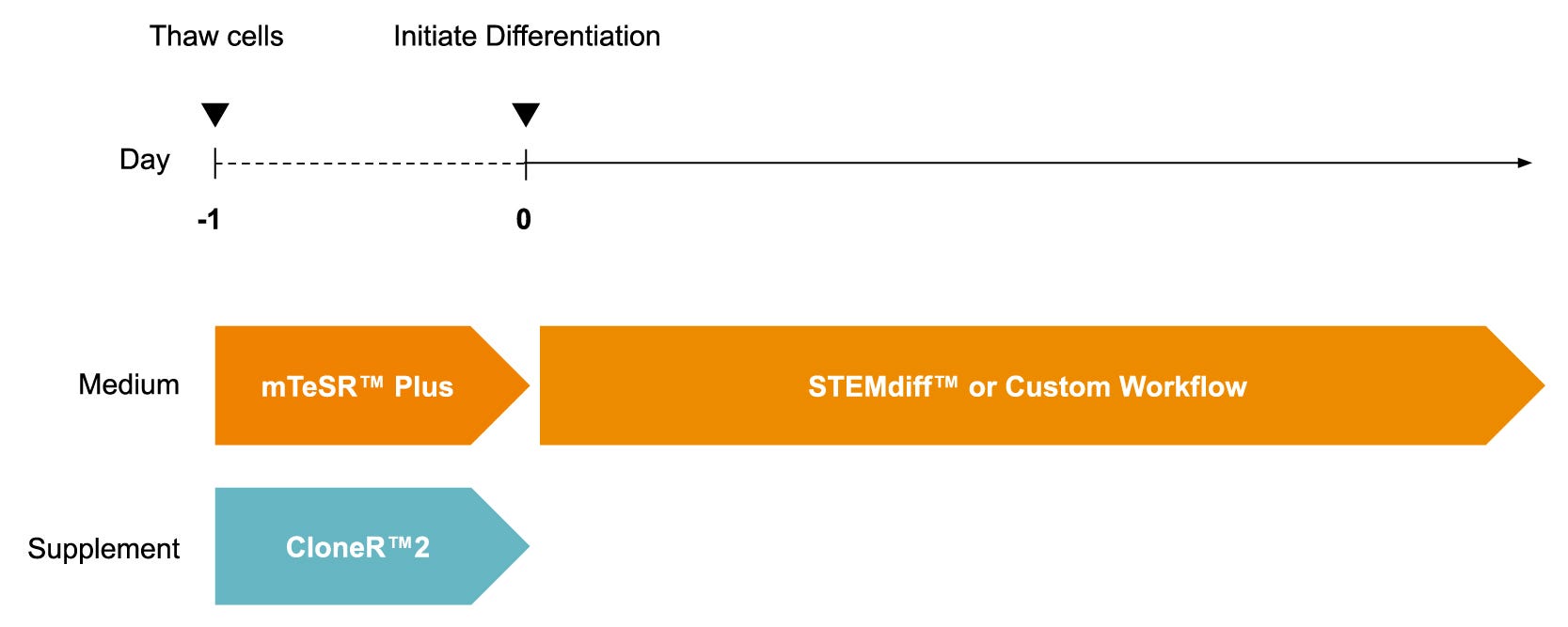
Figure 1. Schematic for a Generalized Monolayer Protocol to Thaw and Culture iPSCdirect™ for iPSC-Based Monolayer Workflows
iPSCdirect™ cells can be thawed and plated into mTeSR™ Plus (Catalog #100-0276) supplemented with CloneR™2 (Catalog #100-0691) and incubated overnight according to product instructions. Recommendations for seeding densities to reach the desired confluency at 24 hours may be found in the Product Information Sheet. After 24 hours, cells are ready for STEMdiff™ or customized monolayer workflows. iPSC = induced pluripotent stem cell.

Figure 2. iPSCdirect™ SCTi003-A Cells Can Be Seeded to Reach a Range of Confluencies After 24 Hours
To reach the desired confluency for downstream experiments, thaw and plate iPSCdirect™ cells into mTeSR™ Plus with CloneR™2 (Catalog #100-0276 and #100-0691) at the densities recommended in the Product Information Sheet. These representative examples of (A) low confluency, (B) medium confluency, and (C) high confluency were cultured after thaw on Corning® Matrigel® hESC-Qualified Matrix and imaged at a magnification of 4X.
Table 1. iPSC Line SCTi003-A Is Derived from a Healthy Female Donor
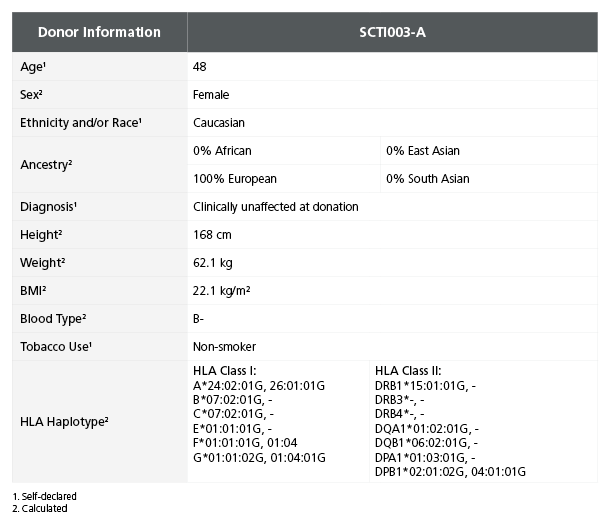
Demographic, health, and genetic characteristics of the SCTi003-A donor are compiled based on self-reported information and whole-exome sequencing. Sex was determined by karyotype. Ancestry and HLA haplotype were calculated from whole-genome and whole-exome sequencing combined data. Blood type (ABO/Rh blood group) was determined by next-generation sequencing. Height, weight, and BMI were calculated at the donation facility. iPSC = induced pluripotent stem cell.
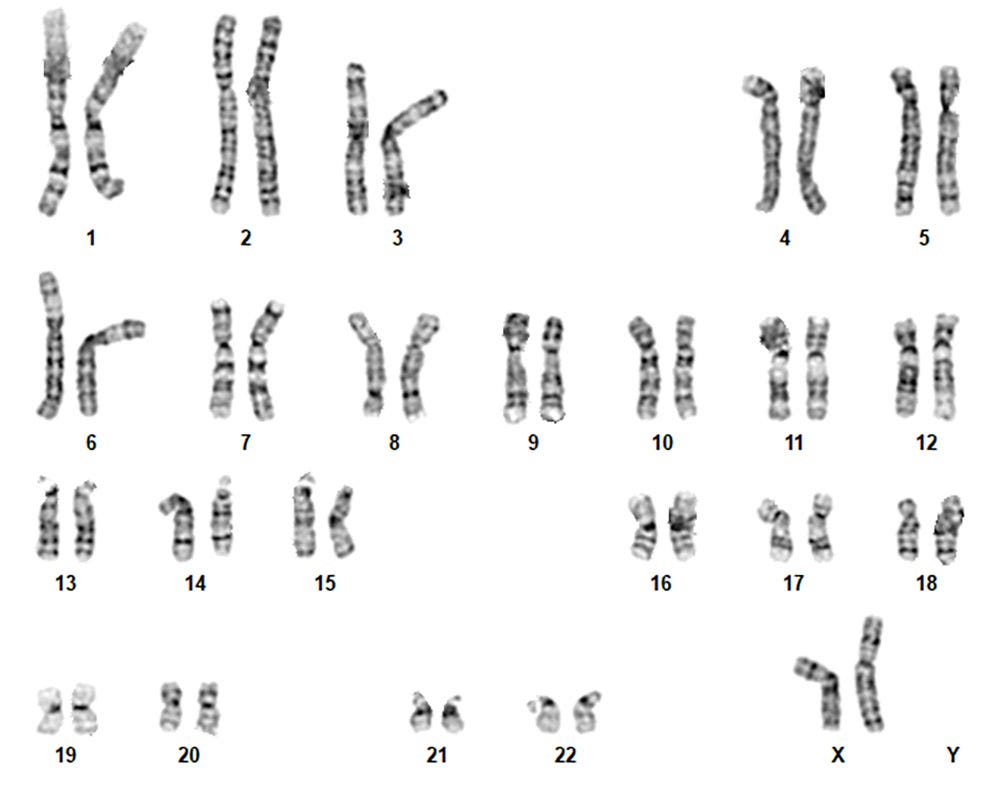
Figure 3. iPSCdirect™ SCTi003-A Human Pluripotent Stem Cells Maintain a Typical Karyotype
G-T-L banding for thawed iPSCdirect™ cells (SCTi003-A p34, n = 40) shows a typical karyotype with no evidence of clonal abnormalities at a band resolution of 425 - 475 G-bands per haploid genome.
Table 2. Single Nucleotide Polymorphism Microarray Analysis Characterizes SCTi003-A Copy Number Variants
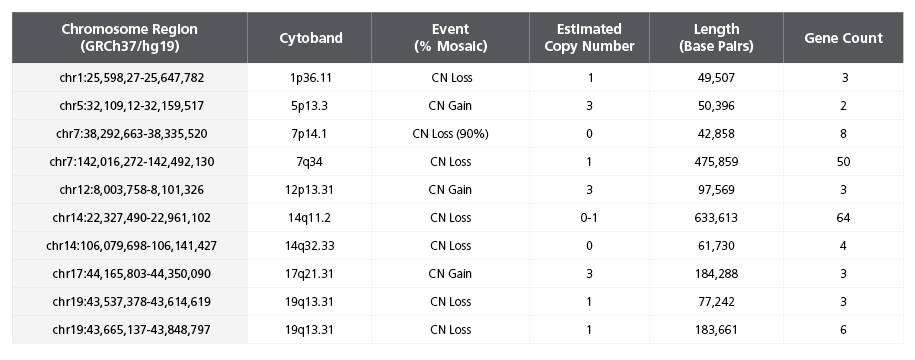
DNA was extracted from a vial of SCTi003-A from the Master Cell Bank and subject to SNP microarray analysis to identify large-scale copy number variants (CNVs). The cells display two reportable CNVs, defined as those greater than 400kb in size, on chromosome 7 and 14 (rows highlighted in bold font). These losses are located in the TCR regions of the genome and are indicative of VDJ recombination process during T Cell development. Array design, genomics position, genes, and chromosome banding are based on genome build GRCh37/hg19. chr = chromosome; start cyto = cytogenetic band at the start of the base pair imbalance; end cyto = cytogenetic band at the end of the base pair imbalance; bp = base pairs; SNP = single nucleotide polymorphism; TCR = T Cell Receptor; VDJ = variable, diversity, joining segment.

Figure 4. iPSCdirect™ SCTi003-A Cells Express Undifferentiated Cell Markers
iPSCdirect™ SCTi003-A was characterized using flow cytometry for undifferentiated cell markers OCT3/4 and TRA-1-60. Percentage marker expression was quantified 4 days after thawing, from analyses of three biological replicates (n = 3 vials). Error bars represent the standard deviation.
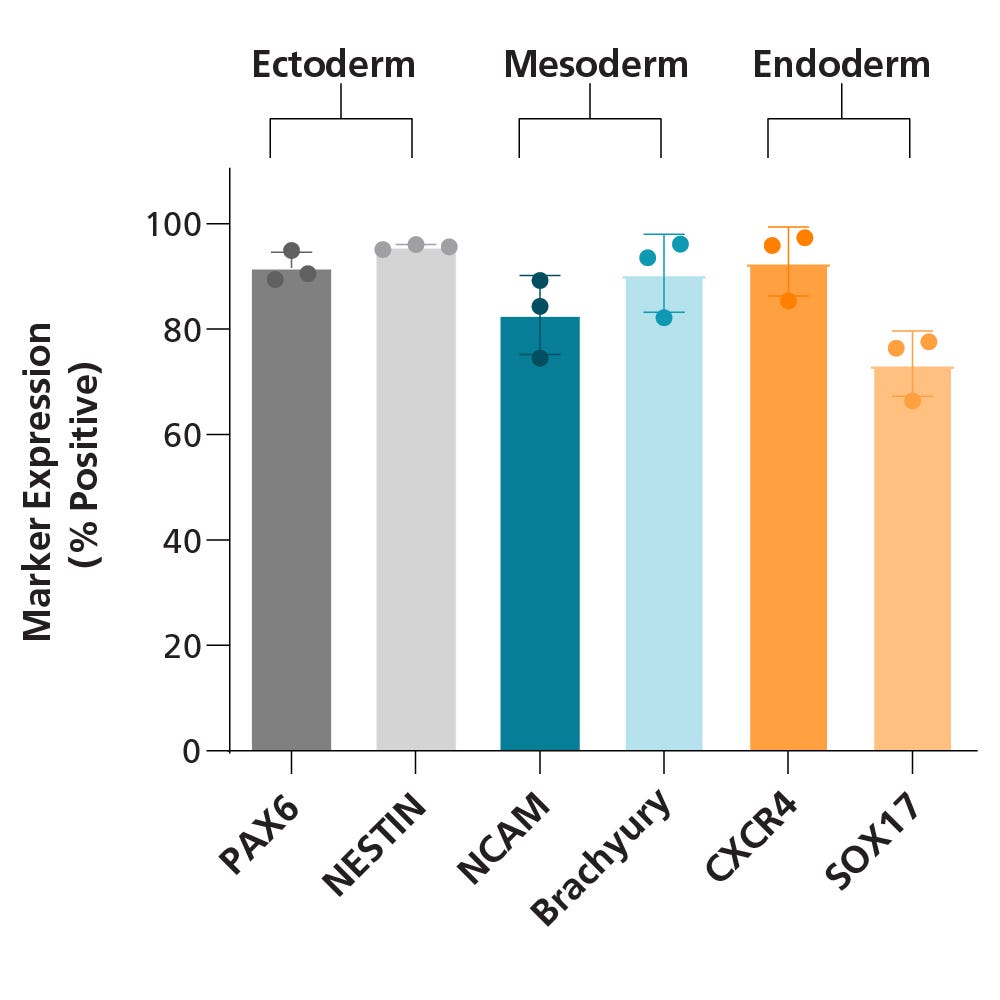
Figure 5. iPSCdirect™ SCTi003-A Human Pluripotent Stem Cells Demonstrate a High Trilineage Differentiation Capacity
iPSCdirect™ SCTi003-A cells were split into 3 groups, differentiated using STEMdiff™ Trilineage Differentiation Kit (Catalog #05230), and then subjected to flow cytometry analysis. Two markers for each embryonic germ layer were assessed, and bars represent mean marker expression for each group of cells (dots represent the average of 3 technical replicates; error bars represent standard deviation; n = 3 biological replicates). All lineage-specific markers were expressed by more than 70% of differentiated cells. Expression of PAX6 and Nestin confirm differentiation to the ectoderm lineage, NCAM and Brachyury (T) expression confirm differentiation to the mesoderm lineage, and CXCR4 and SOX17 expression confirm differentiation to the endoderm lineage.
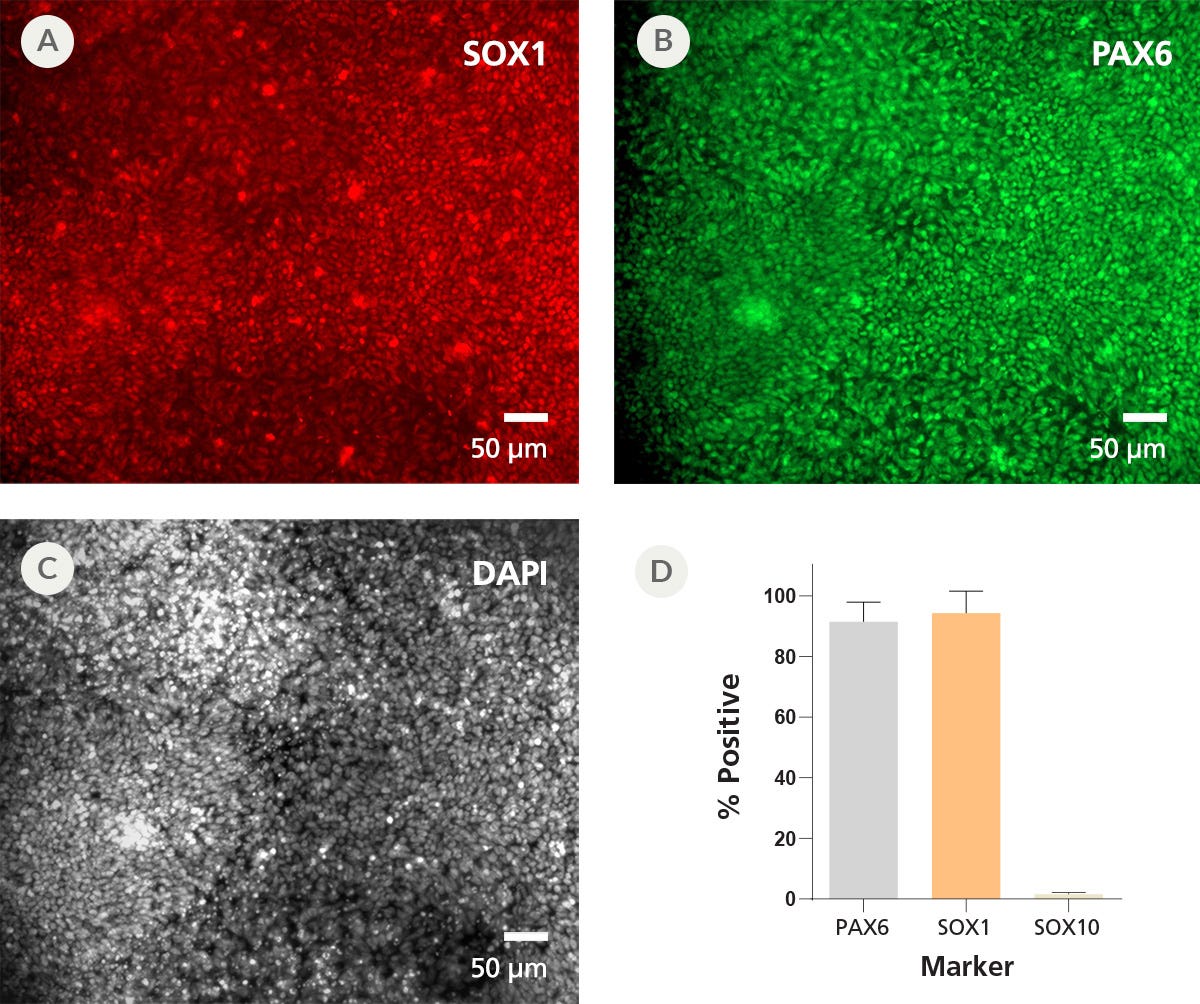
Figure 6. iPSCdirect™ SCTi003-A Human Pluripotent Stem Cells Can Efficiently Differentiate into Neural Progenitor Cells Upon Thawing
NPCs were generated from iPSCdirect™ SCTi003-A cells using the protocol in the iPSCdirect™ Product Information Sheet followed by the monolayer protocol from Day 1 in the STEMdiff™ SMADi Neural Induction Kit Technical Manual (Catalog #08581). After the first 7 days of the protocol, the resulting NPCs were fixed for immunocytochemistry. The NPCs expressed neural progenitor markers (A) SOX1 and (B) PAX6, and nuclei were visualized with (C) DAPI. (D) Marker expression was quantified and negative control SOX10 expression was minimal. Error bars represent standard deviation (n = 2 biological replicates). NPCs = neural progenitor cells.

Figure 7. iPSCdirect™ SCTi003-A Human Pluripotent Stem Cells Can Successfully Differentiate into Ventricular Cardiomyocytes
Ventricular cardiomyocytes were generated from iPSCdirect™ SCTi003-A cells using STEMdiff™ Ventricular Cardiomyocyte Differentiation Kit (Catalog #05010). (A) 48 hours after thawing and plating in mTeSR™ Plus and CloneR™2, iPSCdirect™ cells reached the desired confluency and are ready for Day 0 of differentiation according to the STEMdiff™ Ventricular Cardiomyocyte Product Information Sheet. (B) By Day 15 of differentiation, monolayer cultures show iPSC-derived ventricular cardiomyocytes that (C) exhibit coordinated beating behavior.
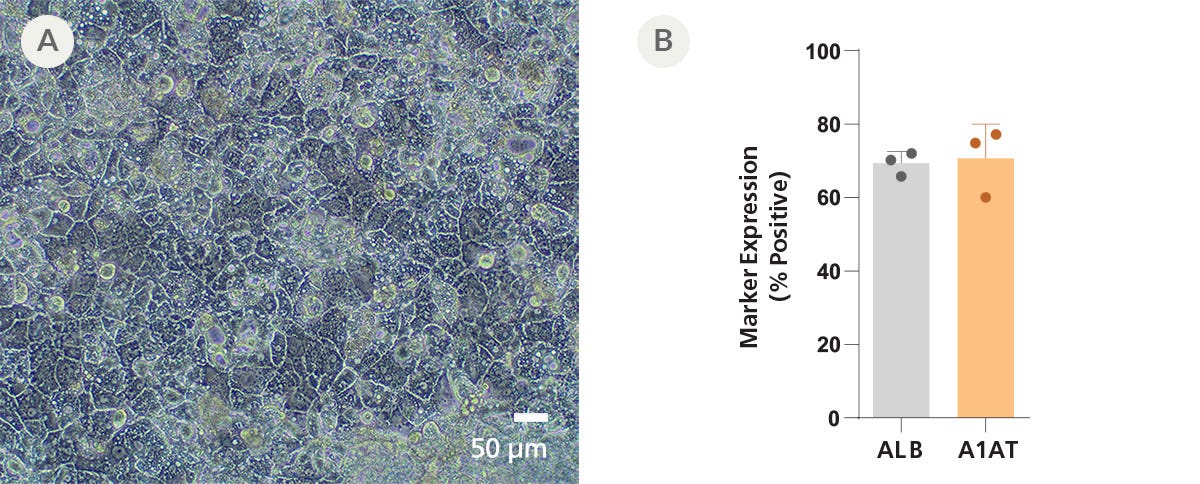
Figure 8. iPSCdirect™ SCTi003-A Human Pluripotent Stem Cells Can Successfully Differentiate into Hepatocytes
iPSCdirect™ SCTi003-A cells were plated according to the iPSCdirect™ Product Information Sheet, in preparation for Day 1 of the STEMdiff™ Hepatocyte Kit (Catalog #100-0520) protocol outlined in the STEMdiff™ Hepatocyte Kit Product Information Sheet. (A) Monolayers of hepatocyte-like cells with characteristic polygonal morphology and binucleation are apparent by Day 21 of differentiation. (B) Marker expression was quantified by flow cytometry for hepatic markers albumin (ALB) and alpha1-antitrypsin (A1AT). Error bars represent standard deviation (n = 3 biological replicates).
请在《产品说明书》中查找相关支持信息和使用说明,或浏览下方更多实验方案。
本产品专为以下研究领域设计,适用于工作流程中的高亮阶段。探索这些工作流程,了解更多我们为各研究领域提供的其他配套产品。
Thank you for your interest in IntestiCult™ Organoid Growth Medium (Human). Please provide us with your contact information and your local representative will contact you with a customized quote. Where appropriate, they can also assist you with a(n):
Estimated delivery time for your area
Product sample or exclusive offer
In-lab demonstration
| 物种 | 人类 |
|---|---|
| Contains | FreSR™-S |
| 细胞与组织来源 | 多能干细胞 |
| 捐献者身份 | 正常 |
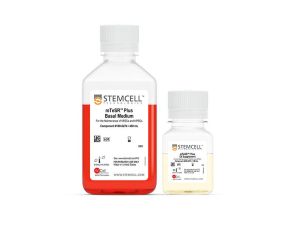
cGMP,稳定无饲养层维持培养基,适用于人ES和iPS 细胞
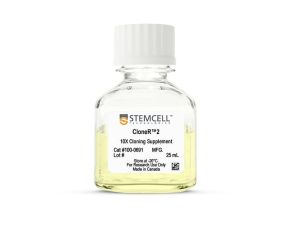
用于提高人胚胎干细胞和有道多能干细胞在单细胞工作流程中的存活率添加物
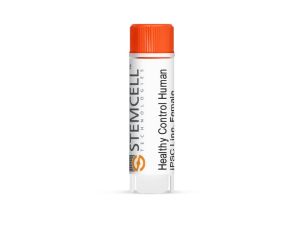
人多能干细胞系,冷冻
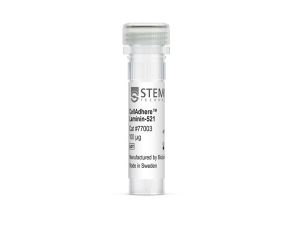
与 TeSR™ 维持培养基配合使用,用于维持人胚胎干细胞(ES)和诱导多能干细胞(iPS)的基质
法律声明:
LIMITED USE LICENSEiPSCdirect™ is a single-use only product. Long-term maintenance or culture of iPSCdirect™ is not permitted. To maintain or expand iPSCdirect™ in the undifferentiated state, end users are required to sign the Standard License Agreement for iPSCs and an annual license fee will apply. Please contact iPSCrequests@stemcell.com for more information.These iPSCs and their modifications (including but not limited to derivatives or differentiated progeny) shall not be used or administered in (1) human subjects for human clinical use; (2) animals for veterinary use for therapeutic, diagnostic, or prophylactic purposes or (3) any subject in relation to, without limiting the generality of the foregoing, clinical applications, cell therapy, transplantation, and/or regenerative medicines, without limiting the generality of the foregoing. These iPSCs and their modifications (including but not limited to derivatives or differentiated progeny) may not be used for monetization or commercialization purposes, including without limitation, used to, or with the goal to, perform services or supply products or rights, including in the manufacture of cellular therapies or other therapeutics, for monetary gain or the generation of royalties, revenues, sales or other valuable consideration. For clarity, these iPSCs and their modifications (including but not limited to derivatives or differentiated progeny) may not be used for screening compounds, antibodies, proteins or peptides, except for the purposes of target discoveryF, target validation, or assay development, provided such activities and the results of such activities are not further used for monetization or commercialization purposes. It may be possible to obtain a further license for the prohibited uses referred to in this Limited Use License. Please contact iPSCrequests@stemcell.com for more details.
质量保证:
产品仅供研究使用,不用于针对人或动物的诊断或治疗。
扫描二维码或搜索微信号STEMCELLTech,即可关注我们的微信平台,第一时间接收丰富的技术资源和最新的活动信息。
如您有任何问题,欢迎发消息给STEMCELLTech微信公众平台,或与我们通过电话/邮件联系:400 885 9050 INFO.CN@STEMCELL.COM。
在线联系

